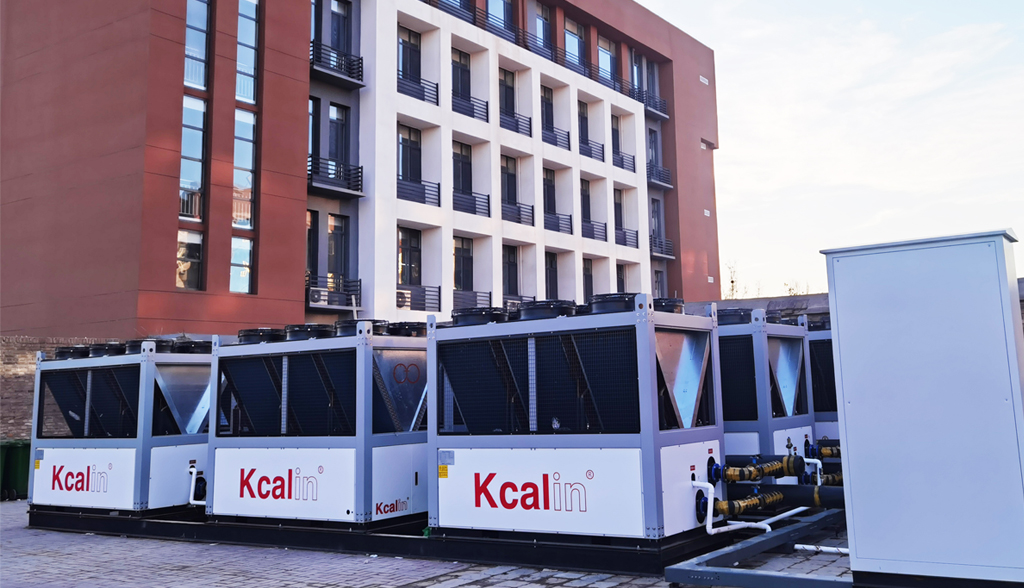Nowadays, more and more schools are realizing the importance of energy conservation and environmental protection. The air energy heat pump system, as a clean heating and cooling solution, has been widely used in school campuses.
The air energy heat pump system is a heating and cooling system based on heat pump technology, and its working principle can be briefly summarized as the following steps:
Evaporator: The evaporator in the system absorbs heat energy from the external air and evaporates the refrigerant into gas.
Compressor: The compressor compresses the gas refrigerant, increasing its temperature and pressure.
Condenser: The condenser releases high-temperature and high-pressure refrigerant into the indoor heating system, releasing heat and increasing indoor temperature.
Expansion valve: The expansion valve reduces the pressure of the refrigerant and prepares it for the next cycle.

This cycle is constantly repeated, providing stable heating and cooling effects. The difference of this system is that it can extract thermal energy from the environment without relying on traditional combustion energy, thus having energy-saving and environmental protection advantages.
The school campus is a complex environment with multiple needs, and the heating and cooling requirements vary according to different seasons and building types. The application of air energy heat pump systems in school campuses can meet diverse needs and bring many important values:
Energy saving and cost reduction: Air energy heat pumps use thermal energy from the environment as their energy source, so their operating costs are relatively low. Schools can reduce energy consumption, reduce energy costs, and achieve energy conservation and cost reduction in long-term operations.
Environmental protection: The air energy heat pump does not generate waste gas or waste, reducing its adverse impact on the environment. This helps schools and campuses play an exemplary role in environmental protection and educate students on the importance of sustainable development.
Multi season heating: Air energy heat pumps can provide heating and cooling functions in different seasons, thus meeting the diverse needs of the school campus. It can provide winter heating and summer cooling, ensuring the comfort of the campus environment.
Stable heating effect: The air energy heat pump provides a uniform heating effect, making the indoor temperature more stable, providing a more comfortable learning and working environment for students and employees.
Long term maintainability: Air energy heat pumps typically have a longer lifespan and are relatively easy to maintain. This means that schools can benefit from the high performance of the system in the long term, reducing maintenance costs and downtime.
Installation and maintenance are key factors in ensuring the effective operation of air energy heat pump systems in school campuses. The installation must be carried out by experienced professionals, and the system must comply with standards and manufacturer's requirements. Maintenance includes regular inspections of various components of the system, cleaning of the evaporator and condenser, and recording maintenance history to assist in the long-term performance of the system.
The air energy heat pump system is an energy-saving and environmentally friendly heating and cooling solution suitable for school campuses. Its application can reduce energy costs, reduce carbon emissions, and create a more comfortable learning and working environment for school campuses. With increasing social attention to environmental protection and energy efficiency, air energy heat pumps will continue to play an important role in school campuses, providing a better future for the next generation. By choosing clean energy solutions, school campuses can make positive contributions to society and the environment.







Comment